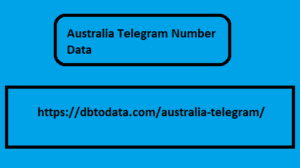Post by ivykhan885 on Mar 10, 2024 4:33:27 GMT
In the digital age, the tourism industry has embraced the use of social media as a key step in promoting destinations and reaching new audiences. In the current context, in which people spend an average of two and a half hours a day on these platforms, social media becomes a crucial asset for intercepting travelers in their search for new travel ideas. In fact, social media not only generates awareness and interest, but actively guides users through the decision process up to purchase. Their function has grown so much as to make them almost more important than Google itself in guiding travellers' choices. It is no coincidence that we are increasingly talking about SEO strategies for optimizing social content . Instagram and TikTok have become the epicenter of inspiration and discovery, shaping the image of destinations and influencing the purchasing decisions of modern travelers. Therefore, in 2023 it is necessary to have a solid presence on social media based, above all, on social media marketing strategies designed specifically for the brand. Let's start from a recent Phocuswire article to analyze how the players in the sector move and which channels they use. The most popular social networks in the travel field The approach of travel brands towards social platforms is highly personalized , there does not appear to be a dominant platform. However, some channels seem to be more successful than others. According to Hootsuite'.
3 report , Instagram ranks first in terms of downloads worldwide, followed by TikTok and then Facebook. These platforms, together with YouTube, are showing a growing trend , unlike other social networks such as Snap and Twitter (now X) which are instead more marginal. Many tourism companies find Instagram suitable for sharing short content, while YouTube is valuable for longer content. TikTok, on the other hand Australia Telegram Number Data plays a crucial role in the holiday planning phase. What factors influence the choice of social media When choosing which social media to use, tourism brands adopt a strategic approach, guided by their objectives and the analysis of the target audience . This is confirmed by Jared Alster, co-founder of Dune7, a digital marketing agency focused on the travel industry. According to Alster, in fact, the decision strongly depends on the sector in which the company operates and on its audience. For example, brands like Fora excel in using LinkedIn.

to bring their product to life through user stories, while Battleface leverages LinkedIn as a distribution channel for their podcast. Instagram, the most downloaded app in the world According to data collected by Hootsuite , Instagram is the most downloaded app in the world (TikTok is in second place), as well as the favorite among travelers belonging to GenZ. Therefore, Meta's social network represents a fundamental channel in the strategy of tourism brands, offering an ideal visual stage to capture the public's attention with suggestive images. Travel brands leverage Instagram features such as stories, posts, IGTV and hashtags to tell engaging stories and inspire the desire to explore new places. Furthermore, collaborations with influencers and the use of user-generated content help create an active and participatory community. The direct purchasing functions then allow you to direct the public towards specific offers and promotions . The unstoppable TikTok Interest in exploring new destinations is constantly growing, and thanks to TikTok , it's never been easier. TikTok has brought authenticity and spontaneity to the world of travel: not only white sand beaches and breathtaking sunsets, but also tropical storms and any unexpected events in which people can find themselves involved.
3 report , Instagram ranks first in terms of downloads worldwide, followed by TikTok and then Facebook. These platforms, together with YouTube, are showing a growing trend , unlike other social networks such as Snap and Twitter (now X) which are instead more marginal. Many tourism companies find Instagram suitable for sharing short content, while YouTube is valuable for longer content. TikTok, on the other hand Australia Telegram Number Data plays a crucial role in the holiday planning phase. What factors influence the choice of social media When choosing which social media to use, tourism brands adopt a strategic approach, guided by their objectives and the analysis of the target audience . This is confirmed by Jared Alster, co-founder of Dune7, a digital marketing agency focused on the travel industry. According to Alster, in fact, the decision strongly depends on the sector in which the company operates and on its audience. For example, brands like Fora excel in using LinkedIn.

to bring their product to life through user stories, while Battleface leverages LinkedIn as a distribution channel for their podcast. Instagram, the most downloaded app in the world According to data collected by Hootsuite , Instagram is the most downloaded app in the world (TikTok is in second place), as well as the favorite among travelers belonging to GenZ. Therefore, Meta's social network represents a fundamental channel in the strategy of tourism brands, offering an ideal visual stage to capture the public's attention with suggestive images. Travel brands leverage Instagram features such as stories, posts, IGTV and hashtags to tell engaging stories and inspire the desire to explore new places. Furthermore, collaborations with influencers and the use of user-generated content help create an active and participatory community. The direct purchasing functions then allow you to direct the public towards specific offers and promotions . The unstoppable TikTok Interest in exploring new destinations is constantly growing, and thanks to TikTok , it's never been easier. TikTok has brought authenticity and spontaneity to the world of travel: not only white sand beaches and breathtaking sunsets, but also tropical storms and any unexpected events in which people can find themselves involved.
